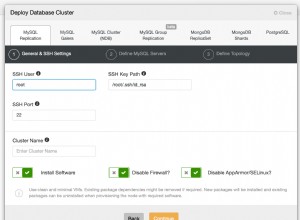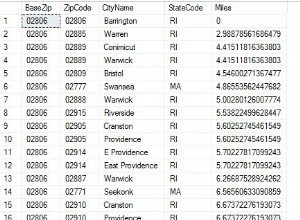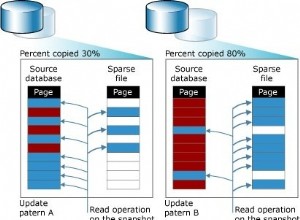Nie, nie możesz bezpośrednio zmień status konta z EXPIRE(GRACE) na OPEN bez resetowania hasła.
dokumentacja mówi:
Możesz jednak pośrednio zmienić status na OPEN, resetując hash hasła użytkownika do istniejącej wartości. Niestety, samo ustawienie skrótu hasła ma następujące komplikacje, a prawie każde inne rozwiązanie pomija przynajmniej jeden z tych problemów:
- Różne wersje Oracle używają różnych typów skrótów.
- Profil użytkownika może uniemożliwiać ponowne użycie haseł.
- Limity profilu można zmienić, ale na końcu musimy zmienić wartości.
- Wartości profilu nie są trywialne, ponieważ jeśli wartość to
DEFAULT, czyli wskaźnik doDEFAULTwartość profilu. Być może będziemy musieli rekurencyjnie sprawdzić profil.
Poniższy, absurdalnie duży blok PL/SQL powinien obsłużyć wszystkie te przypadki. Powinno to zresetować każde konto do OPEN, z tym samym hashem hasła, niezależnie od wersji Oracle lub ustawień profilu. Profil zostanie przywrócony do pierwotnych limitów.
--Purpose: Change a user from EXPIRED to OPEN by setting a user's password to the same value.
--This PL/SQL block requires elevated privileges and should be run as SYS.
--This task is difficult because we need to temporarily change profiles to avoid
-- errors like "ORA-28007: the password cannot be reused".
--
--How to use: Run as SYS in SQL*Plus and enter the username when prompted.
-- If using another IDE, manually replace the variable two lines below.
declare
v_username varchar2(128) := trim(upper('&USERNAME'));
--Do not change anything below this line.
v_profile varchar2(128);
v_old_password_reuse_time varchar2(128);
v_uses_default_for_time varchar2(3);
v_old_password_reuse_max varchar2(128);
v_uses_default_for_max varchar2(3);
v_alter_user_sql varchar2(4000);
begin
--Get user's profile information.
--(This is tricky because there could be an indirection to the DEFAULT profile.
select
profile,
case when user_password_reuse_time = 'DEFAULT' then default_password_reuse_time else user_password_reuse_time end password_reuse_time,
case when user_password_reuse_time = 'DEFAULT' then 'Yes' else 'No' end uses_default_for_time,
case when user_password_reuse_max = 'DEFAULT' then default_password_reuse_max else user_password_reuse_max end password_reuse_max,
case when user_password_reuse_max = 'DEFAULT' then 'Yes' else 'No' end uses_default_for_max
into v_profile, v_old_password_reuse_time, v_uses_default_for_time, v_old_password_reuse_max, v_uses_default_for_max
from
(
--User's profile information.
select
dba_profiles.profile,
max(case when resource_name = 'PASSWORD_REUSE_TIME' then limit else null end) user_password_reuse_time,
max(case when resource_name = 'PASSWORD_REUSE_MAX' then limit else null end) user_password_reuse_max
from dba_profiles
join dba_users
on dba_profiles.profile = dba_users.profile
where username = v_username
group by dba_profiles.profile
) users_profile
cross join
(
--Default profile information.
select
max(case when resource_name = 'PASSWORD_REUSE_TIME' then limit else null end) default_password_reuse_time,
max(case when resource_name = 'PASSWORD_REUSE_MAX' then limit else null end) default_password_reuse_max
from dba_profiles
where profile = 'DEFAULT'
) default_profile;
--Get user's password information.
select
'alter user '||name||' identified by values '''||
spare4 || case when password is not null then ';' else null end || password ||
''''
into v_alter_user_sql
from sys.user$
where name = v_username;
--Change profile limits, if necessary.
if v_old_password_reuse_time <> 'UNLIMITED' then
execute immediate 'alter profile '||v_profile||' limit password_reuse_time unlimited';
end if;
if v_old_password_reuse_max <> 'UNLIMITED' then
execute immediate 'alter profile '||v_profile||' limit password_reuse_max unlimited';
end if;
--Change the user's password.
execute immediate v_alter_user_sql;
--Change the profile limits back, if necessary.
if v_old_password_reuse_time <> 'UNLIMITED' then
if v_uses_default_for_time = 'Yes' then
execute immediate 'alter profile '||v_profile||' limit password_reuse_time default';
else
execute immediate 'alter profile '||v_profile||' limit password_reuse_time '||v_old_password_reuse_time;
end if;
end if;
if v_old_password_reuse_max <> 'UNLIMITED' then
if v_uses_default_for_max = 'Yes' then
execute immediate 'alter profile '||v_profile||' limit password_reuse_max default';
else
execute immediate 'alter profile '||v_profile||' limit password_reuse_max '||v_old_password_reuse_max;
end if;
end if;
end;
/




